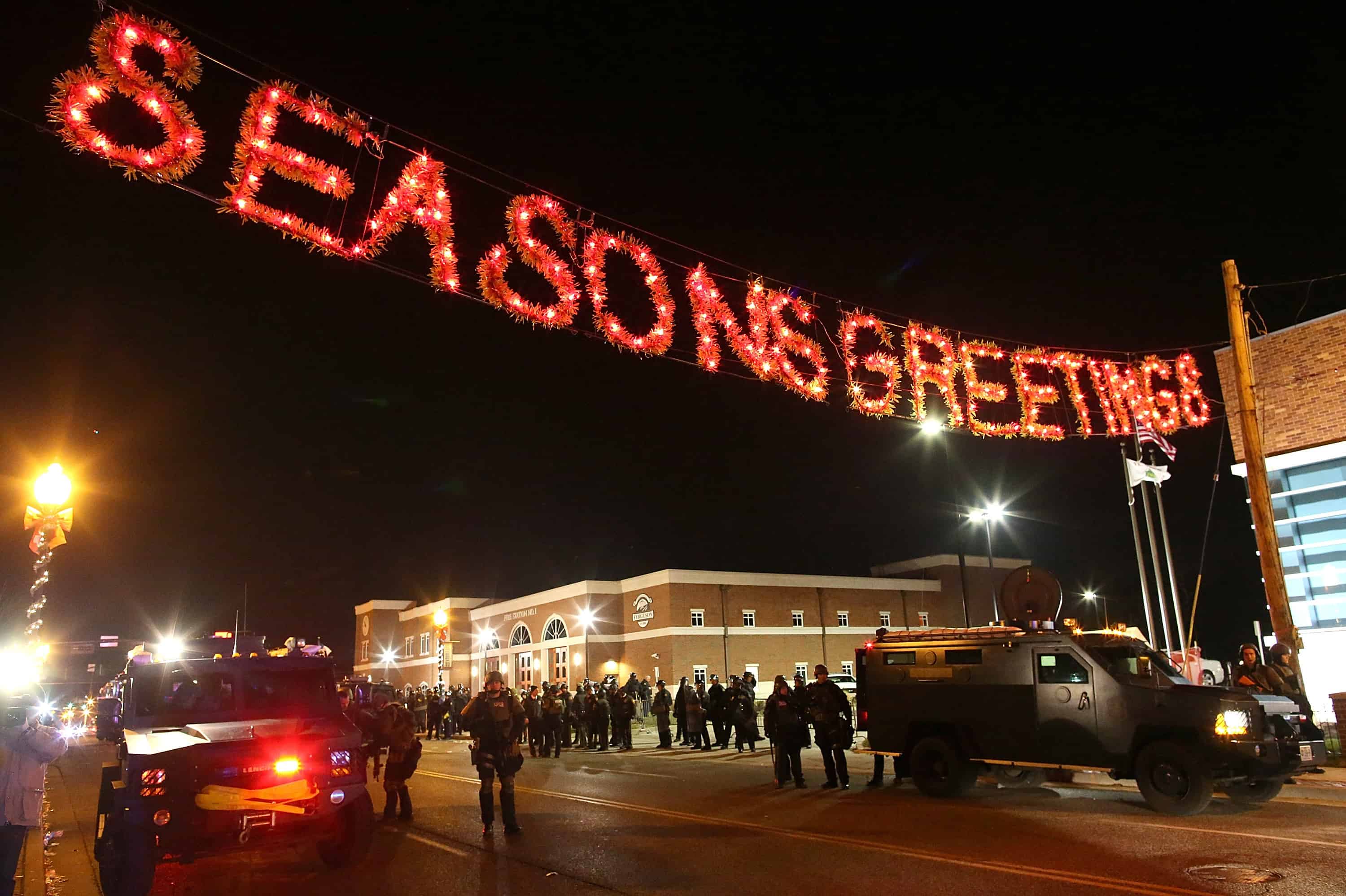FERGUSON, Missouri — A grand jury on Monday declined to indict police officer Darren Wilson in the fatal shooting of an unarmed black teenager, resolving a secretive, months-long legal saga and reigniting powerful frustrations about the United States’ policing of African Americans.
The decision means that Wilson, 28, will face no state charges for the August 9 shooting of 18-year-old Michael Brown. It also set off a show of fury on streets near where Brown was shot, a reflection of emotions that register in this riven city as either out of control or justifiable.
Yellow and orange ribbons from a burning police car lit up a block. Police fired tear-gas canisters to contain the crowds. Not far from Christmas lights in downtown Ferguson that read “Seasons Greetings,” people looted liquor and convenience stores, a response that ran counter to the peace that Missouri authorities, President Barack Obama and Brown’s family had requested.
As St. Louis County Prosecuting Attorney Robert McCulloch announced the decision, National Guard troops fanned out across the city. Though there was calm and silence in the streets of Ferguson for a half-beat after the announcement, but anger erupted shortly thereafter, and just after midnight county police reported hearing automatic-weapon fire.
In a sign of the way that the events from Ferguson have both compelled and startled a nation, protesters also gathered in front of the White House and in several other major cities, with sporadic reports of police cars being attacked.
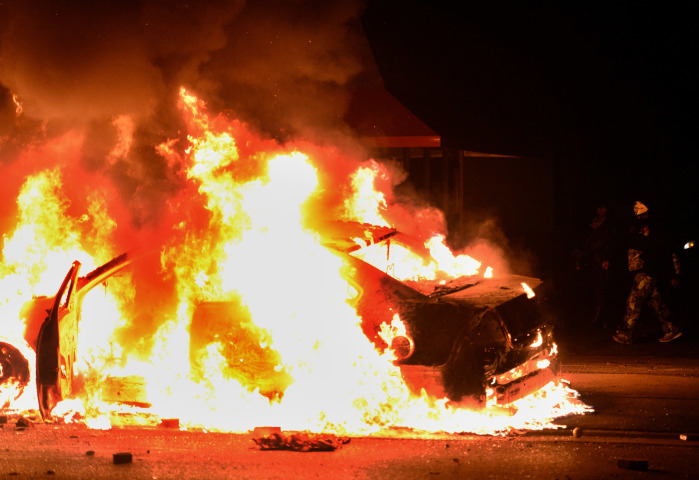
Though many in St. Louis expected that Wilson would not be indicted, officials here faced a challenge in trying to provide rationale for that decision. McCulloch, during a news conference, emphasized that testimony varied sharply among eyewitnesses and made it difficult to have a clear account of what unfolded during the 90-second confrontation between Wilson and Brown on Canfield Drive.
“Hands up, don’t shoot” has become a rallying cry in recent month for protesters, but McCulloch said that even the image of Brown’s surrender may have been a fiction.
“Some witnesses maintained their original statement that Mr. Brown had his hands in the air and was not moving toward the officer when he was shot,” McCulloch said. “Several witnesses said Mr. Brown did not raise his hands at all or that he raised them briefly and then dropped them and then turned toward Officer Wilson, who then fired several rounds.”
A statement from Wilson’s attorneys released shortly after the grand jury announcement said that officers must sometimes make “split-second and difficult decisions” and that Wilson “followed his training and followed the law.”
Obama, speaking after the grand jury announcement, urged peace in St. Louis, as did many authorities in the region. The president also asked officers in Ferguson to show restraint. But Missouri Gov. Jay Nixon, D, warned that “if people are violent or threatening property, then resources will be used.”
Watch President Obama's statement on the #Ferguson grand jury decision. http://t.co/PMkjKQTol3
— White House Archived (@ObamaWhiteHouse) November 25, 2014
For more than three months, the grand jury — made up of seven men and five women, nine white and three black — heard evidence into the shooting. They met 25 times and heard from 60 witnesses, McCulloch said.
A trove of evidence from the proceedings was released late Monday night, but beforehand McCulloch tried to describe the encounter between Wilson and Brown. He said that during the incident, Wilson angled his vehicle to block the path of Brown and friend Dorian Johnson. Two shots were fired while Wilson still sat in the car, and Brown’s blood was found inside the vehicle. McCulloch said, referencing witnesses, that some kind of “tussling” or “tug of war” took place.
Brown then ran east on Canfield, and Wilson gave chase. “Less than 90 seconds passed” during the entire encounter, McCulloch said. Ten shots were fired after Brown fled, and Brown was hit seven or eight times.
“We are profoundly disappointed that the killer of our child will not face the consequence of his actions,” the Brown family said in a statement released Monday night.
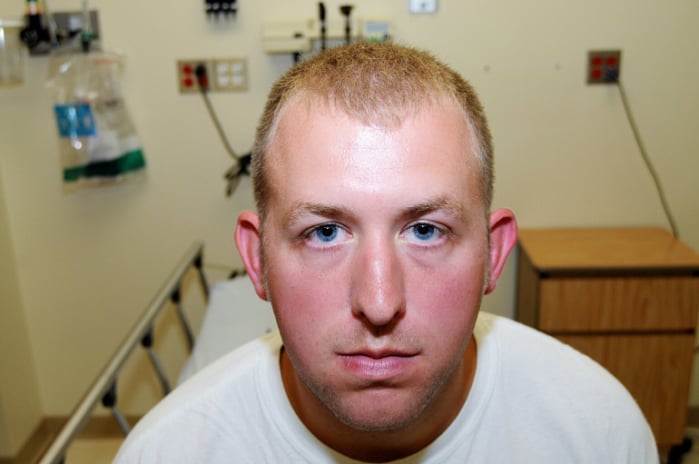
Among the documents released Monday, one showed Wilson in the hospital — presumably right after the shooting — standing and looking head-on at the camera. One of his cheeks was red, but not heavily bruised, in contrast with rumors after the shooting that suggested he had a broken or cracked orbital socket.
Officials had discussed emergency plans in the event of a violent reaction, while protest organizers and community leaders mapped out their response in the hopes of avoiding the unrest that exploded after Brown was killed. Brown’s family had asked for 4.5 minutes of silence after a grand jury decision was announced — symbolic of the 4.5 hours Brown’s body remained on the street after the shooting.
Hundreds had gathered on South Florissant Road, a main area of commerce in Ferguson. The windows of a law firm and a video store were smashed. Fuel fed fire in a garbage can, and protesters were wiping their faces of what they said was tear gas. The Ferguson police department, where Wilson worked, is also on South Florissant.
“I know how outraged and upset people are, but where’s the justice in this?” said Rosalind Hagedorn, a homemaker who came out to join the demonstration in front of police headquarters, pointing at a Beauty World shop with smashed windows. She said she has lived here for more than 30 years and shopped at that store. “I understand the emotion, but these people did nothing,” she said.
U.S. Attorney General Eric Holder on Monday night called Brown’s death a “tragedy” that has “sparked a national conversation about the need to ensure confidence between law enforcement and the communities they protect and serve.”
Download and read officer Darren Wilson’s grand jury testimony here
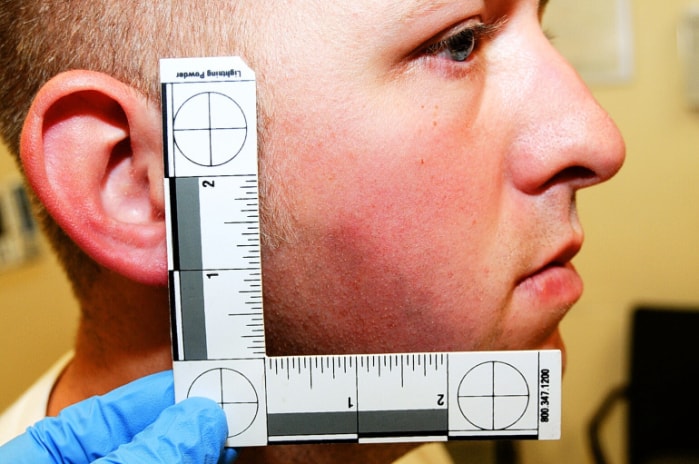
The grand jurors convened in mid-August, days after the shooting, and spent weeks considering the case. Discussions could have stretched on even longer; the panel had been granted an extension through early January.
Impatience and pressure for a decision have been building among residents and business owners, as well as police officers, who have been working 12-hour shifts with all leave time canceled since Saturday, said Jeff Roorda, business manager for the St. Louis Police Officers Association. That schedule will continue through the aftermath of the grand jury’s decision.
The closed-door grand jury process, much like the initial investigation, has been controversial throughout. In early October, for example, allegations of misconduct arose after a Twitter user wrote that a friend sat on the panel and did not think there was enough evidence to arrest the officer. (The woman later said she had been hacked.)
In recent weeks, the most vocal protesters and local organizers have insisted that they never believed Wilson would face charges.
See also: Suburban US ghettos like Ferguson are ticking time bombs
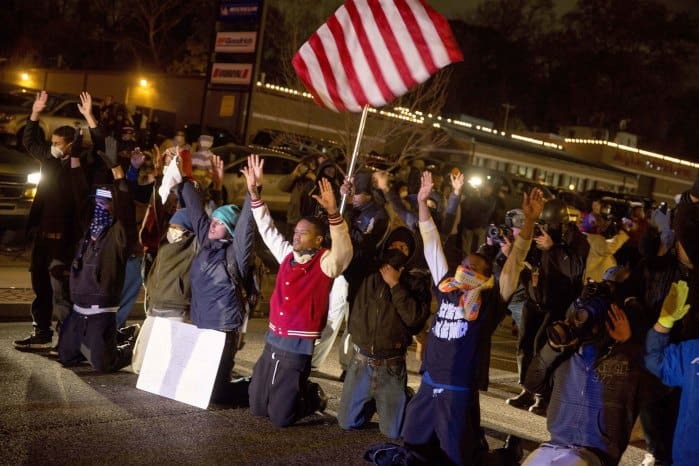
The Justice Department’s civil rights investigation was announced days after the shooting, with Holder traveling to Ferguson, where National Guard troops had been deployed amid the increasingly chaotic aftermath. In early September, Holder announced that his agency also would review the Ferguson Police Department, investigating claims that officers may have engaged in a pattern of racial profiling or excessive force.
“Anecdotal accounts underscore the history of mistrust of law enforcement in Ferguson,” Holder said then. “As a result of this history, and following an extensive review of documented allegations and other available data, we have determined that there is cause for the Justice Department to open an investigation.”
After the fatal shooting, protesters responded by gathering in the streets of Ferguson, calling for justice in the Brown case and broad reform on a municipal level. Hundreds spent their August nights following grainy live-stream feeds from West Florissant Avenue, as activists and residents were hit with tear gas and police in riot gear flooded the streets. Many who were arrested later claimed they had done nothing to prompt police action and questioned law enforcement’s response to the unrest.
Authorities defended their actions, saying they were trying to keep order while respecting the public’s right to protest.
Early on, there were calls for McCulloch, the St. Louis County prosecutor, to step down from the case. Activists, troubled by McCulloch’s personal and professional ties to law enforcement, demanded a special prosecutor. But Nixon would not ask McCulloch to recuse himself, and McCulloch declined to step aside.
“As I have stated repeatedly,” McCulloch said in a statement. “I have no intention of walking away from the responsibilities and duties entrusted to me by the people of this community.”
Washington Post staff writers Sarah Larimer and Jerry Markon in Washington contributed to this report.
Read all our coverage of the Michael Brown case here
© 2014, The Washington Post

